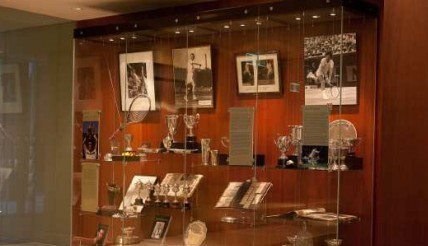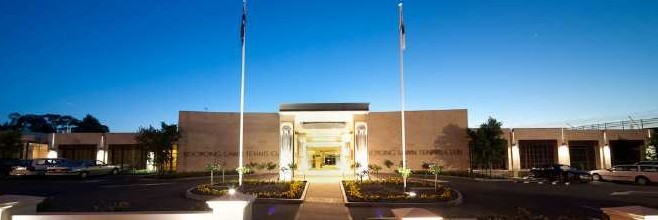A Rich History
 A Historical Background
A Historical Background
Within a year of the first Wimbledon Championships, the citizens of Melbourne, Australia
had embraced with enthusiasm the new sport of lawn tennis. In its infant years the
Melbourne Cricket Club controlled the game. In 1892 the Kooyong Lawn Tennis Club,
known as the Lawn Tennis Association of Victoria, was formed to take over administration
of tennis in the colony of Victoria.
Melbourne born Norman Brookes' sensational Wimbledon victory in 1907, followed a
month later with his capture of the Davis Cup in partnership with New Zealander
Anthony Wilding, was a turning point in the Club's development. Courts were rented
for the first time at the Albert Ground in St Kilda Road to stage Australia's first
Davis Cup, for which Brookes, a member of the Association's Council, was the sole
selector and mainstay of the home team.
 After the First World War tennis received a further impetus following the two Wimbledon
Singles victories in 1919 and 1922 of Gerald Patterson, another Melburnian. To accommodate
the growing popularity of the game a seventeen-acre site was purchased in the Melbourne
suburb of Kooyong (from the Aboriginal word kooyongkoot meaning 'the haunt of the
wild fowl'). Twenty lawn courts were laid out, and a clubhouse and concrete stadium
built to host Kooyong's first Australian Championship in 1927.
After the First World War tennis received a further impetus following the two Wimbledon
Singles victories in 1919 and 1922 of Gerald Patterson, another Melburnian. To accommodate
the growing popularity of the game a seventeen-acre site was purchased in the Melbourne
suburb of Kooyong (from the Aboriginal word kooyongkoot meaning 'the haunt of the
wild fowl'). Twenty lawn courts were laid out, and a clubhouse and concrete stadium
built to host Kooyong's first Australian Championship in 1927.
In the following years the Kooyong courts were graced by a succession of international
players. Prominent among these were Jean Borotra, Ellsworth Vines, Fred Perry and
Donald Budge whose victory over John Bromwich in the Victorian Singles Championships
at Kooyong in 1937 paved the way for his Australian title victory and the first
leg in his historic Grand Slam.
 After the Second World War
Kooyong was the venue for seven memorable Davis Cup Challenge Rounds, the most famous
of which took place in 1953 when teenagers, Lew Hoad and Ken Rosewall defeated the
Americans, Tony Trabert and Vic Seixas. Kooyong's last Challenge Round in 1986 saw
Australia defeat Sweden after two notable singles victories by Pat Cash.
After the Second World War
Kooyong was the venue for seven memorable Davis Cup Challenge Rounds, the most famous
of which took place in 1953 when teenagers, Lew Hoad and Ken Rosewall defeated the
Americans, Tony Trabert and Vic Seixas. Kooyong's last Challenge Round in 1986 saw
Australia defeat Sweden after two notable singles victories by Pat Cash.
The next year the Australian national titles were played for the last time on the
Kooyong grass centre court after which the venue was switched to the high-tech National
Tennis Centre in Flinders Park. By then the Kooyong Lawn Tennis Club had ceased
to be responsible for the day to day administration of tennis in Victoria and had
embarked on a program of progressive upgrading of its facilities to meet the demands
of a new generation of members.
The Kooyong Classic, held each January before the Australian Open, regularly attracts
leading international players and maintains the Club's tradition as an internationally
significant tennis venue.








